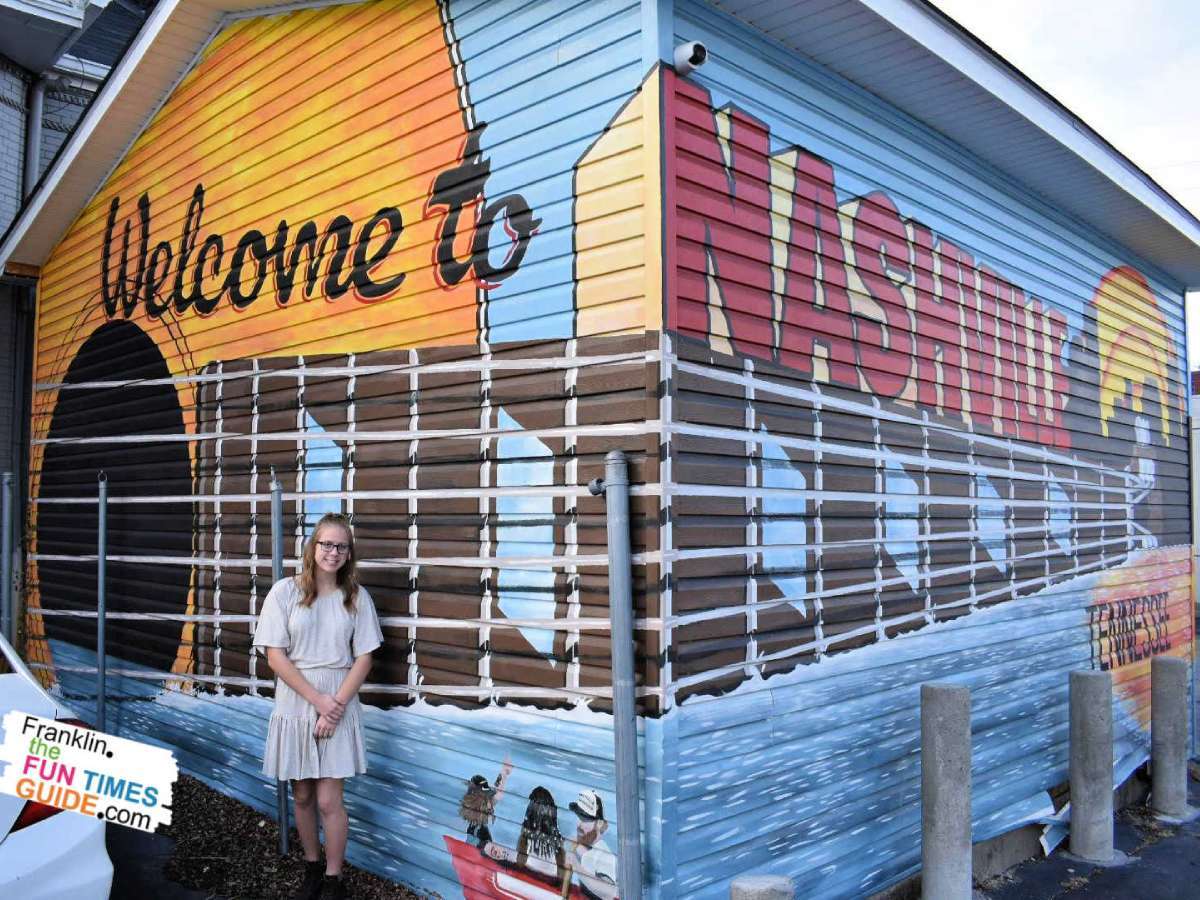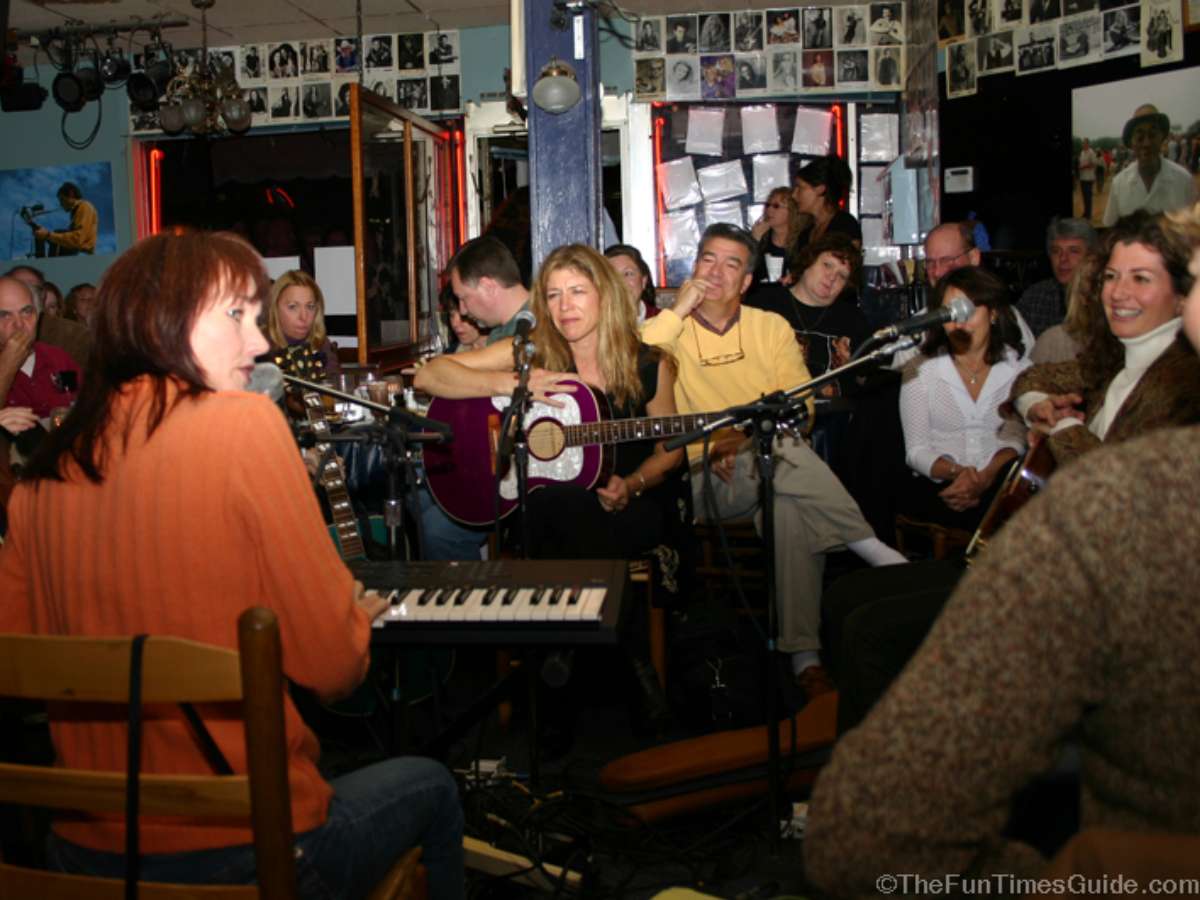Drawn by both our own love for parks and the allure of historic charm, we ventured into the heart of Nashville to explore Centennial Park.
Not only does the park boast its iconic centerpiece, the Parthenon, a lasting legacy of the Tennessee Centennial Exposition of 1897, but it also offers much more. Hold on tight, because there’s a world of discovery waiting within its boundaries!
Here’s a little about our first time visiting Nashville’s Centennial Park…
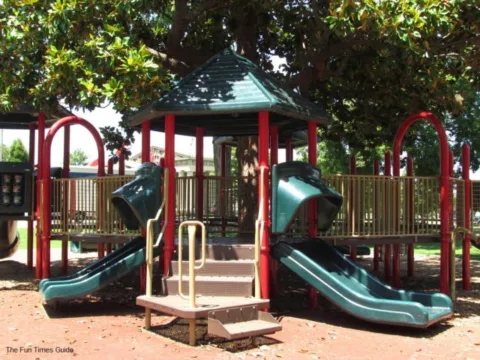
First Impressions
As you can imagine, the park is really big. We only explored a little bit of it (due to time restraints), but we do plan to go back in the fall.
We started at Lake Watauga which is an artificial lake (didn’t know that either). The lake is pretty with fountains and ducks but it wasn’t particularly shady where we were, so we began to feel the heat and quickly moved on.
We then took a look at the map of Centennial Park and I let the kids decide where to go next. I had my fingers crossed for the sunken garden. They chose… the playground. (Big surprise, huh?)
One of the things I really look for in parks — especially in the heat of the summer — is shade trees. Luckily, as we drove from the lake to the playground there were shade trees a plenty!
Nashville’s Centennial Park Playground: Two Thumbs Up!
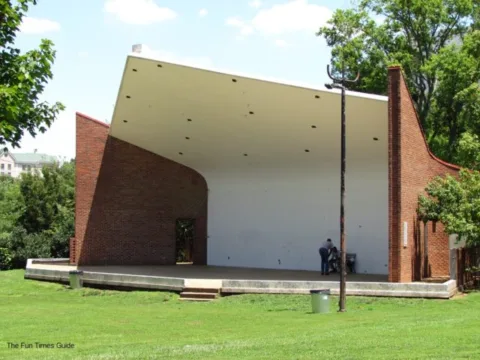
At the playground, smack dab in the middle of the equipment is this huge tree. (It looks like a Magnolia tree to me, but I could be wrong.) Not only is it gorgeous, but it covers the entire play area with much needed shade. The kids happily played on the equipment for quite a while with all the other children that were there — which was more than I expected since it was very hot.
On our way to the playground, we passed the Centennial Park band shell. This is an outdoor stage that holds a long history of musical entertainment. There is also seating at the band shell (so you don’t have to bring your own chairs). Events are still held at the band shell. For example, each August the Nashville Shakespeare Festival takes place there.
Once the kids were done with the playground, we walked around a bit. There was beautiful music coming from somewhere.
All around the playground area are these wonderful, large wooden swings. My kids couldn’t leave the park without trying one of these things! The swing was big enough to fit all 3 of them and it only took a little movement and the swing was in motion. In cooler weather, you could spend a good amount of time leisurely swinging and enjoying the beauty of the park.
So Much To See And Do In The Area
We had limited time and zero coolness, so we decided to head home. But we’ll be back! This beautifully maintained park has so much to see and do that it was impossible for us to get it all in in one visit.
On the day we visited, there were many people doing a variety of different things in the park:
- We saw someone relaxing under one of the large shade trees reading a book.
- We saw a group of kids playing Frisbee.
- We saw people riding their bikes.
- We saw people walking (for exercise).
- We saw many people enjoying Centennial Park with their pets.
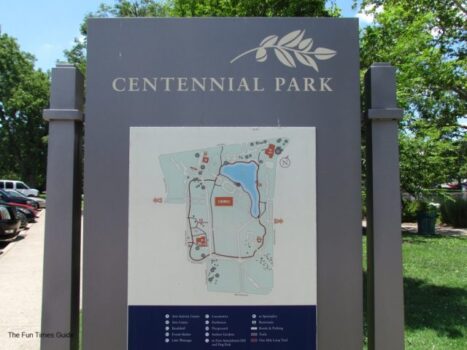
Some other wonderful features of Centennial Park worth mentioning:
- A 1-mile walking trail (which, even in the summer heat, had many people on it)
- An art center
- A sunken garden
- Sand volleyball courts
- 2 dog parks
- And a handful of historical monuments scattered around the park
Things To Know Before You Go
For your GPS, Centennial Park is located at 2598 West End Avenue – Nashville, Tennessee 37232.
Park hours are from dawn until 11 PM.
- There is no parking or driving on the grass — which may be an issue when planned events are going on. There is plenty of FREE parking though, so on most days this is not an issue.
- There are public restrooms.
- During the summer bring lots of water!
- The park is very close to Vanderbilt University. It’s a great opportunity to swing by and visit that beautiful campus.
Here’s a little about the history of Nashville’s Centennial Park…
History Of Centennial Park Nashville

Centennial Park in Nashville boasts a rich and varied history, dating back to the city’s early days. Here’s a summary of the park’s significant dates:
Early Life (1783-1895)
- Originally it was farmland owned by Anne Robertson Johnson Cockrill and John Cockrill, brother-in-law of Nashville founder General James Robertson.
- Converted into state fairgrounds after the Civil War.
- Transformed into a racetrack known as West Side Park from 1884 to 1895.
Exposition Era (1897)
- Renamed Centennial Park to host the Tennessee Centennial and International Exposition, celebrating the 100th anniversary of Tennessee’s statehood.
- Transformed into a bustling fairground with temporary exhibit buildings, an artificial lake (Lake Watauga, pictured above), sunken gardens, and a bandshell.
- The iconic Parthenon replica, initially built as a temporary structure, proved immensely popular.
Park Transformation (1902-Present)
- Most temporary structures were removed after the exposition, but the beloved Parthenon remained.
- In 1902, the core 72 acres became Nashville’s first major public park, gradually expanding to its current 132 acres.
- The Parthenon, initially constructed from wood and plaster, was rebuilt in concrete and steel from 1921 to 1931, solidifying its status as the park’s centerpiece.
- The park evolved over time, adding features like the Centennial Art Center, Sunken Gardens (originally Lily Lake and later a Japanese Water Garden), and Ice Rink Centennial.
Today
- Centennial Park Nashville remains a beloved hub for recreation, leisure, and cultural events.
- It offers diverse activities like walking, biking, boating, concerts, art exhibits, and historical exploration.
- The Parthenon continues to be a major attraction, housing an art museum and offering cultural programming.
Anne Robertson Johnson Cockrill: A Pioneering Woman and Landowner
Anne Robertson Johnson Cockrill was much more than just the wife who owned land with her husband in what is now Centennial Park.
She was a remarkable pioneer woman who played a significant role in the early development of Nashville and left her mark on history:
Early Life and Significance
- Born in 1757 in North Carolina, sister of Nashville co-founder James Robertson.
- Married David Johnson in 1775, but he died just two years later.
- Demonstrated bravery and leadership during the attack on Fort Caswell in 1776.
- Joined the Cumberland settlers under Donelson’s flotilla in 1779, possibly taking charge on their boat when men were needed elsewhere.
Land Ownership and Legacy
- Married John Cockrill in 1784, settling on land that included present-day Centennial Park.
- In 1783, the North Carolina legislature awarded her a 640-acre land grant, the first woman in Tennessee to receive such an honor. This recognized her contributions to the “advance guard of civilization.”
- Her land became vital for community growth, hosting early sawmills and settlements.
Beyond Land
- While details are scarce, she likely supported the community in various ways, raising 8 children and potentially contributing to domestic tasks and agriculture.
- Her life embodies the resilience and resourcefulness of pioneer women who played crucial roles in the development of the frontier.
Connection to Centennial Park
- Her land became part of the park after being acquired by the city in 1894.
- A monument located near the Parthenon recognizes her contributions, inscription reading: “In memory of Anne Robertson Johnson Cockrill, one of the pioneer women of Tennessee, whose courage and devotion helped to build a state.”
Exploring Further
- The Tennessee Encyclopedia has a detailed article on her life and achievements
- You can visit Centennial Park and the monument dedicated to her, reflecting on her pioneering spirit and contributions to Nashville’s history.
By delving into her story, we can gain a deeper understanding of the vital roles women played in shaping Tennessee’s early settlements and appreciate the legacy of a remarkable pioneer like Anne Robertson Johnson Cockrill.

